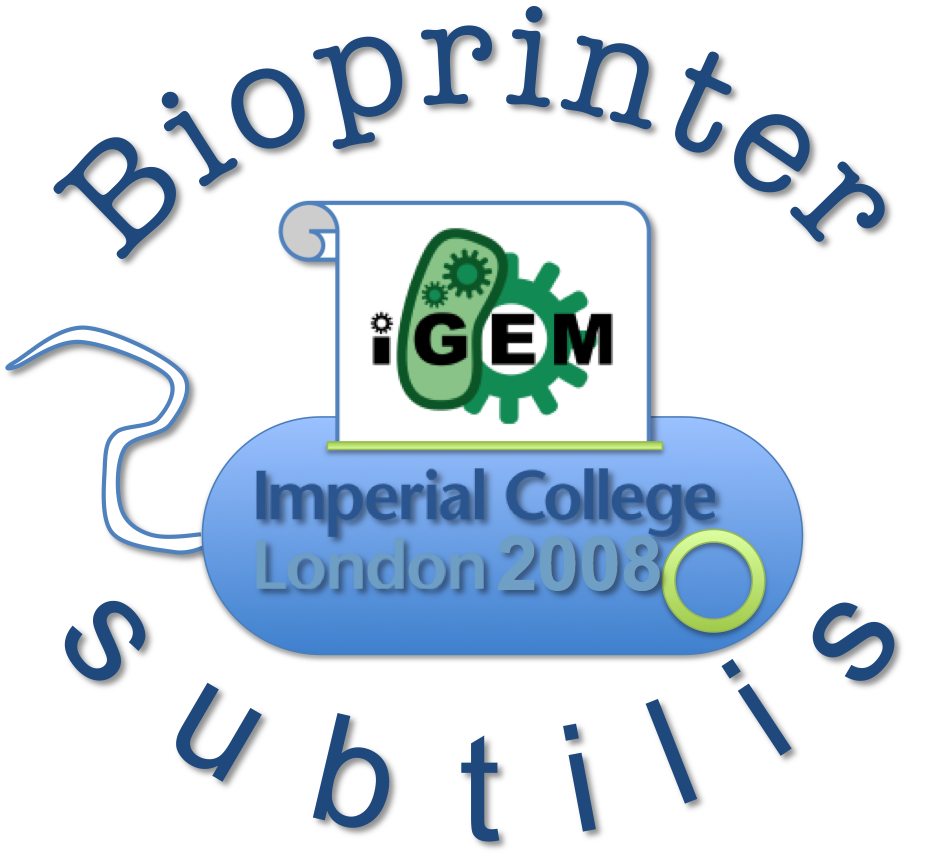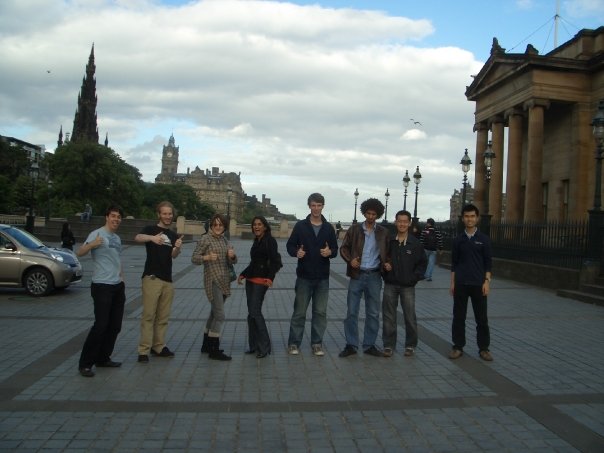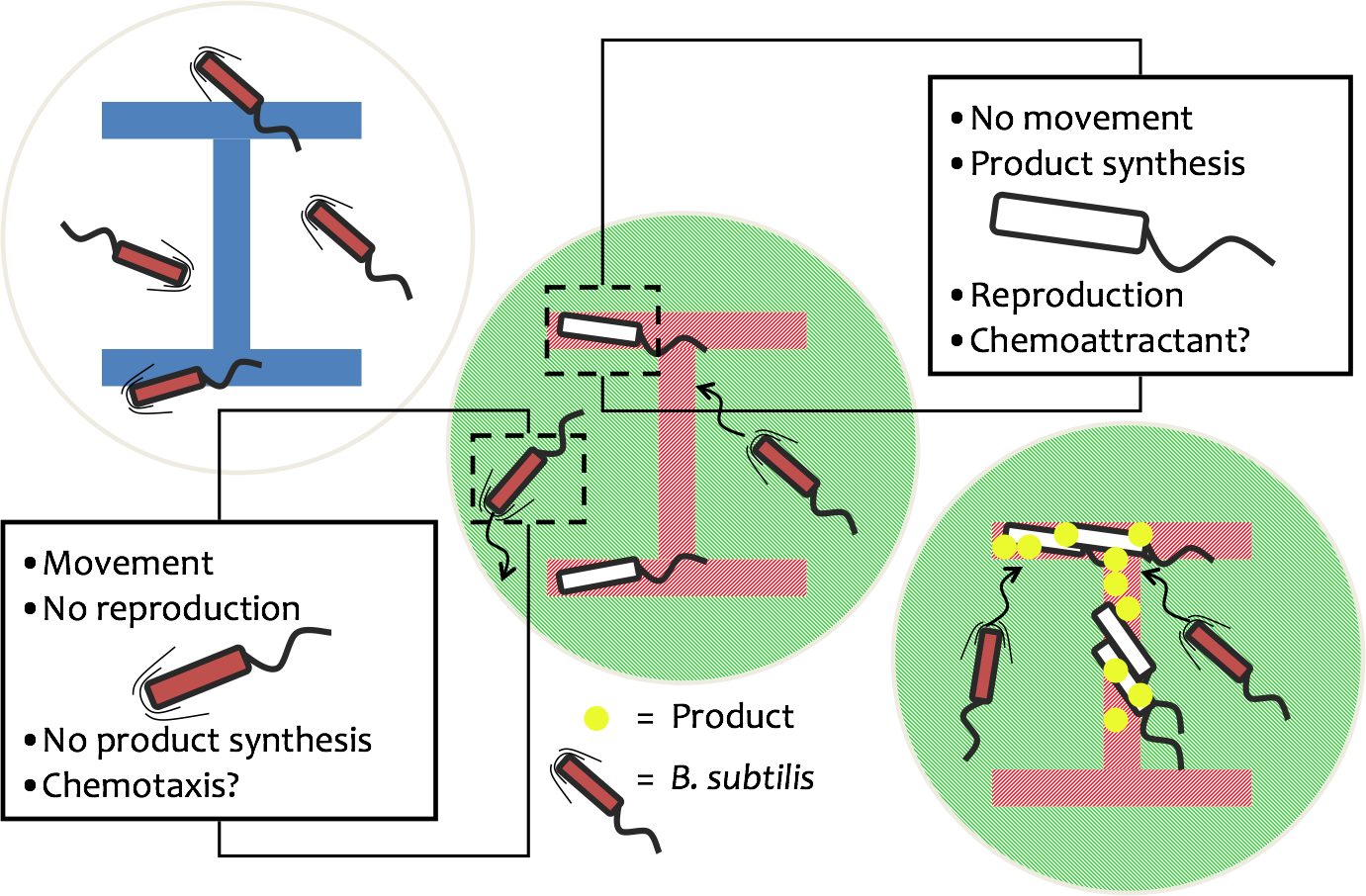Team:Imperial College
From 2008.igem.org
(Difference between revisions)
| Line 3: | Line 3: | ||
| - | [[Image:Imperial_2008_Logo.png|center|400px | + | [[Image:Imperial_2008_Logo.png|center|400px]] |
<hr> | <hr> | ||
<center>Welcome to the Imperial 2008 iGEM team's main project page. It's {{CURRENTDAYNAME}}, {{CURRENTMONTHNAME}} {{CURRENTDAY}} and a great day to read about an awesome iGEM project!</center> | <center>Welcome to the Imperial 2008 iGEM team's main project page. It's {{CURRENTDAYNAME}}, {{CURRENTMONTHNAME}} {{CURRENTDAY}} and a great day to read about an awesome iGEM project!</center> | ||
| - | |||
| - | |||
| - | |||
<hr> | <hr> | ||
| Line 17: | Line 14: | ||
| For the 2008 iGEM competition, the Imperial College team is working on the foundations for a bioprinter. We are using the Gram-positive ''Bacillus subtilis'' bacterium as a chassis (for a variety of reasons) and hope to be able to exert fine control over its movement via a recently-discovered clutch mechanism[http://www.sciencemag.org/cgi/content/full/sci;320/5883/1636]. Using light as a stimulus to localise the bacteria, we then intend to trigger production and secretion of a self-assembling bio-scaffold material in a set pattern. The project was inspired by 3D printers used in fabrication of prototypes for manufacturing, and our "blue-sky" aim is to make a 3D bioprinter! | | For the 2008 iGEM competition, the Imperial College team is working on the foundations for a bioprinter. We are using the Gram-positive ''Bacillus subtilis'' bacterium as a chassis (for a variety of reasons) and hope to be able to exert fine control over its movement via a recently-discovered clutch mechanism[http://www.sciencemag.org/cgi/content/full/sci;320/5883/1636]. Using light as a stimulus to localise the bacteria, we then intend to trigger production and secretion of a self-assembling bio-scaffold material in a set pattern. The project was inspired by 3D printers used in fabrication of prototypes for manufacturing, and our "blue-sky" aim is to make a 3D bioprinter! | ||
| | | | ||
| - | {| border=0 cellspacing=0 cellpadding=5 width=500px style="background:# | + | {| border=0 cellspacing=0 cellpadding=5 width=500px style="background:#33bbff" align=right |
| - | ! align=left colspan=1 |The Team || rowspan=2 |[[Image:Imperial_2008_Big_Team_Photo.jpg|216px|Prudence is taking the picture... Click for larger image!]] || bgcolor="# | + | ! align=left colspan=1 |The Team || rowspan=2 |[[Image:Imperial_2008_Big_Team_Photo.jpg|216px|Prudence is taking the picture... Click for larger image!]] || bgcolor="#33bbff" rowspan=2| |
|- | |- | ||
| colspan=1 valign=top |The Imperial College 2008 iGEM team consists of nine undergraduates (five bioengineers, three biochemists and one biologist), five advisors and two professors. You can find out more about the team members at the [[Team:Imperial_College/Team | team page]]. | | colspan=1 valign=top |The Imperial College 2008 iGEM team consists of nine undergraduates (five bioengineers, three biochemists and one biologist), five advisors and two professors. You can find out more about the team members at the [[Team:Imperial_College/Team | team page]]. | ||
Revision as of 19:18, 1 August 2008
|
 "
"



